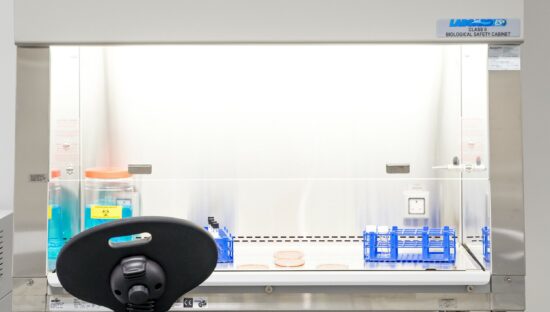
You’ve been awarded grant funding! What happens next?
You researched, drafted, wrote, drafted again, wrote again, and finally submitted that all important grant proposal. After what feels like an entire lifetime, you finally get that email notification you’ve been praying for – your proposal has been awarded funding.
Horizon’s Inno4COV-19 was the first large scale European funding competition we won. The grant was to support rapid commercialisation of a new decontamination technology, capable of decontaminating small and confined spaces in hospital and healthcare settings, which was to be completed within the project deadline of one year. With a 7% success rate, and being the only UK county within the EU to be awarded funding, we were very proud of this achievement.

So, what’s the next steps?
It seems we talk a lot about how to write grants, but not so much about what happens after funding is awarded. This is disadvantageous, because how you handle the next steps play a crucial role in the overall success of the project, and the likelihood of securing future funding.
Below, I’ve listed the top 5 take away points I learnt from Inno4-COV19 funding process:
1. Make friends with your funder and don’t delay communications.
Once the funding offer letter is received, typically by email, the single most important next step is reading the terms and conditions, understanding them, and responding in good time. It sounds obvious, but delaying acceptance of funds will only have negative implications further along. Gather the required documents and email them to the funders as soon as possible, not forgetting to thank them for their generosity in the process. For the duration of the project you will have regular communications with the funders, so it’s essential you provide a great first impression and act promptly.
2. Re-read your proposal for out of date content.
Project timelines and implementation activities listed in your proposal shouldn’t be taken lightly. The funders will hold you accountable to these milestones and expect that they are completed accurately and precisely on time, so they must be realistic. The wait time between proposal submission to acceptance can be a very long-drawn-out process, so it’s somewhat expected that certain unforeseen changes may have taken place during this period, forcing the project timeline to deviate from the original proposal. For example, a colleague may have left the business, or a particular resource is no longer available; whatever the reason if you suspect the milestones are no longer achievable, it must be communicated to the funders as soon as possible.
3. Project Planning
A lack of project tracking can lead to detrimental delays, which overtime snowballs into larger problems and before you know it the entire project is derailed. A well organised project management process must be in place and in constant review to enable successful completion of the project on time. With Inno4-Cov19, we shared updates on the projects progression by having a scheduled reoccurring meeting once a fortnight. Focus was on milestones achieved listed in the proposal, and what mitigating solutions were in place to ensure we wouldn’t experience project creepage. Additionally, weekly meetings were conducted with the internal project team to ensure focus remained of the specific tasks required of them to enable successful project completion.
4. Project Reporting
Project reporting is a crucial part of the grant process and a lot of departments will need involvement, including finance, HR and collaborative partners. For inno4-COV19, stipulations included a video introduction discussing the new technology and intended use, advertisement of grant acceptance on social media channels, completion of a Technical Report and Third Party Monitoring Report, just to name a few. You need to keep on top of it all, so created a discipline and allocate protected time for all required activities.
5. Closing the project
This is the most exciting part – in our case, we have delivered a physical unit, designed and developed to specification agreed with funders. Each project will have its own closing process and actions that must be completed. The Inno4-COV19 closing process included in-person product presentation, at an event where all other grantees were showcasing their project deliverables. Attending the event, completing final technical report and providing final presentation video were all critical in successfully closing the project and receiving the final funds.

As a closing note, it’s important to remember that grants are basically contracts. Each grant will stipulate different rules and agreements for the intended use of funds, and it’s essential that these are abided to at the very best of your ability. Get in touch if you would like to discuss your project or if you have any questions about any of the points raised in this post. Check out our Funding & Investment page to learn how we can support your grant funding process.





